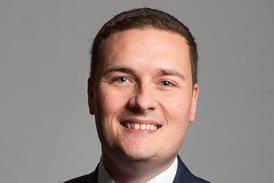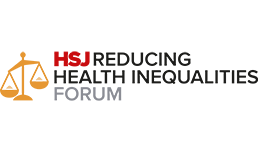A second period of lockdown reinforces the need to deliver planned care to patients whose lives may not be at immediate risk, but whose quality of life depends on the ability of the NHS to meet their needs, writes Stephen Dorrell.
![]()
This is paid-for content from our commercial partners. Find out more
The Prime Minister could not have been clearer.
When he announced the second round of lockdown in England, he stressed the importance of mitigating the covid-related workload on NHS hospitals in order to protect their ability to meet the health needs of non-covid patients.
Sponsored by
This is surely one of the key lessons of the first wave of the pandemic.
The speed of the NHS response has been widely recognised. The development of the Nightingale hospitals provided a high profile story, but the changes in primary care, and expansion of ITU capacity, the acceleration of clinical research and the development of new treatments for covid have all provided evidence of the ability of the NHS to respond quickly to the changing demands placed upon it
But a second period of lockdown reinforces the need to deliver planned care to patients whose lives may not be at immediate risk, but whose quality of life depends on the ability of the NHS to meet their needs.
None of this is new – nor is it specific to covid. The requirement to balance competing clinical priorities is intrinsic to the NHS.
Every hospital manager knows that urgent and emergency need must be their first priority, and they also know that there are always plenty of voices – both within and beyond the clinical community – watchful and ready when to remind them of the point if it appears to be in any doubt.
But the fact that urgent and emergency needs take priority does not mean that planned care is unimportant or can be overlooked.
During the first phase of the pandemic it was widely understood, including by patients, that the NHS needed to respond to the priority needs of covid patients.
But as the months have passed, and waiting times for planned care have been extended, the priority principle has come to have another meaning; it has come to mean that patients waiting for planned care are also a priority, and that the NHS needs to demonstrate that it is able to meet their needs.
These patients are entitled to expect that their forbearance will be recognized, and their needs will be met.
It is of course easy to set out the principle – and much more difficult to deliver it. Real life intrudes.
Covid reduced the operational capacity of hospitals at the same time as it has created additional demand. The onset of winter means that the pressures created by the second wave will have to be addressed against the background of rising winter pressures; clinical capacity continues to be constrained by the availability of qualified staff, and the ability of managers to respond is, as always, constrained by the need to manage budgets.
The pressure has been intensified by covid, but it was not created by covid. The drive for improved performance requires all organizations to constantly reassess their practices and procedures and covid throws an unsparing spotlight on those who have not kept up.
Some techniques are fundamental. Computer tools allow management to stratify risk in waiting lists and link that analysis both to hospital capacity and forecast future demand. These analyses allow management to anticipate bottlenecks rather than simply react to them; they make planning possible.
But analysis is not the same as action; it may work in the model, but it will only work in real life if people change the way they work.
Analysis of the results of the national theatre productivity programme showed, for example, that many NHS providers introduced a range of initiatives to tackle growing waiting lists including extra payment lists, additional weekend lists, increased agency staff and outsourcing but failed to tackle issues which are well known to frustrate optimal utilisation across the elective pathways. The analysis showed that the failure to address those performance issues left 290,000 patients without the treatment that should have been available to them.
This is not a statistical trick, based on the law of averages; it simply reflects failure to apply principles in some places which are commonplace in others.
Reducing the incidence of late starts, avoidable cancellations, poor scheduling, last minute planning and poor leave management is not cutting edge science; but it does require intelligent use of available tools and a collective commitment to apply principles which have been proved to be effective elsewhere. Bringing on additional capacity whilst not fully utilising that which already exists wastes essential healthcare resources that can make the difference.
Data has never been so rich and transparent; simple tools allow performance to be compared and safe productivity objectives to be set and monitored.
No two hospitals are the same and variations will occur. But the additional pressures created by covid make it more important than ever that to use the tools which are available to reduce avoidable variation.
Winter pressures are inevitable, and we know that covid will intensify them this year, but we cannot continue to defer the priority needs of non-covid patients.
The second lockdown creates the opportunity to demonstrate that the NHS is there for them.































